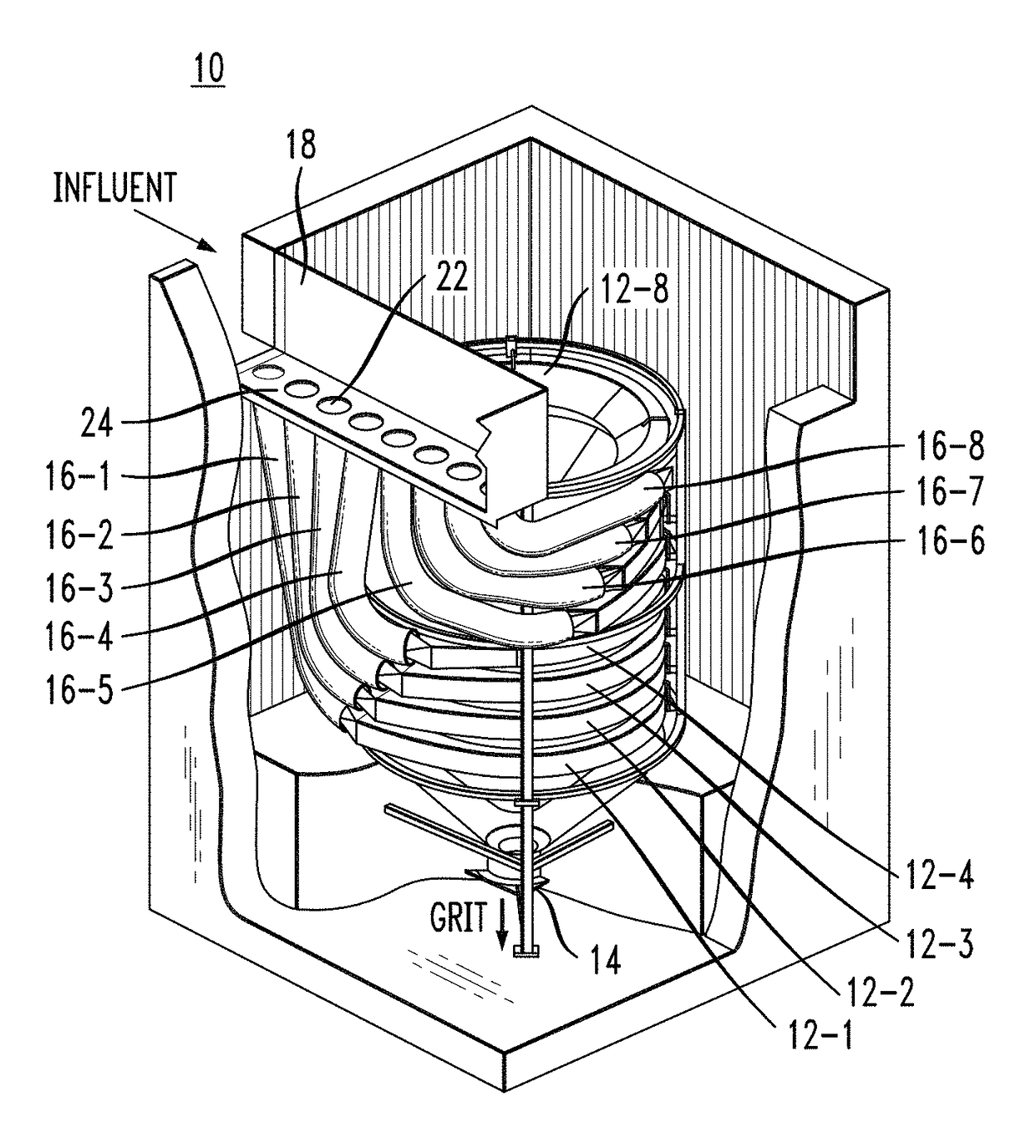Low headloss feed devices and control methods for tray-type vortex grit removal systems
a vortex grit and feed device technology, applied in the field of wastewater treatment, can solve the problems of accelerated wear, premature failure of components, interference with the performance of downstream machinery where the grit is present, etc., and achieve the effect of improving grit removal efficiency and reducing headloss
- Summary
- Abstract
- Description
- Claims
- Application Information
AI Technical Summary
Benefits of technology
Problems solved by technology
Method used
Image
Examples
Embodiment Construction
[0022]FIG. 1 illustrates a conventional, prior art grit removal system 1. A brief review of the operation of such a system is considered to be important to best understanding the subject matter of the present invention, as fully described hereinafter in association with FIGS. 2-10.
[0023]Grit removal system 1 is illustrated in a partially cut-away view in FIG. 1, allowing for the geometry of the stack of trays and movement of the grit to be easily shown. System 1 is typically configured to include a plurality of frusto-conical trays 2 that are stacked in the vertical direction. The vertical direction is indicated as the y-axis in FIG. 1, and may also be considered as the direction along which the grit will move (downward) and ultimately exit system 1 through a grit outlet 3.
[0024]In operation, wastewater (hereinafter referred to as “influent”) is introduced into system 1 through an inlet chute 4, where it fills a vertically-oriented inlet duct 5. In the particular configuration shown...
PUM
| Property | Measurement | Unit |
|---|---|---|
| size | aaaaa | aaaaa |
| size | aaaaa | aaaaa |
| length | aaaaa | aaaaa |
Abstract
Description
Claims
Application Information
 Login to View More
Login to View More - R&D
- Intellectual Property
- Life Sciences
- Materials
- Tech Scout
- Unparalleled Data Quality
- Higher Quality Content
- 60% Fewer Hallucinations
Browse by: Latest US Patents, China's latest patents, Technical Efficacy Thesaurus, Application Domain, Technology Topic, Popular Technical Reports.
© 2025 PatSnap. All rights reserved.Legal|Privacy policy|Modern Slavery Act Transparency Statement|Sitemap|About US| Contact US: help@patsnap.com



